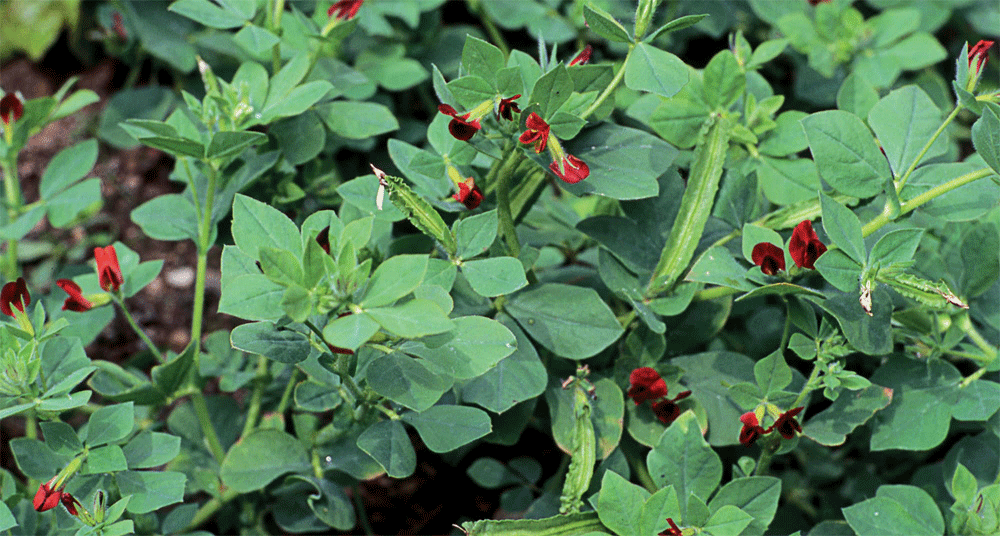A legume that is neither asparagus-like nor a pea, this cheerful garden vegetable may be considered esoteric by some but is an epicurean treat to the initiated. It is so easy to grow that I wonder why I do not see it in more gardens, for it will tolerate the same sort of arid, worn-out ground preferred by nasturtiums. As far as I am concerned, there is always a spot for it in my garden, if for no other reason than its profusion of bright red flowers, which the Victorians found quite pleasing. James Vick of Rochester promoted it in his seed catalog (1872, 62) as an ornamental mixed with sweet peas.
The origin of this plant, also known as the winged lotus (it is not a lotus either!), appears to be northwest Africa, but during classical antiquity it was dispersed throughout the Mediterranean. Unfortunately, the archaeological record has not yielded much on the early history of the plant or its uses, but it is mentioned in many Renaissance herbals. Philip Miller, in 1734, was one of the first garden writers to mention that the pods were edible. Bernard M’Mahon of Philadelphia sold seed in the early 1800s under the name Winged Pea, the name by which it was known in colonial America. The old Philadelphia gentry used to serve it as a garnish on fricasseed frog’s legs.
The flavor of the cooked pods is highly aromatic and not akin to asparagus as its name would imply, but the pods must be harvested very young, perhaps no more than 3/4 inch long, otherwise they become tough and stringy. The pods retain their color when cooked and are best blanched or steamed for about 15 minutes, then added to other dishes for visual interest and texture. They can be mixed with peas, added to stir-fries, or combined with rice and whole-grain dishes.
Seeds can be started indoors in April and the seedlings thinned to small pots. They may be transplanted to the garden in May or after all threat of frost has passed. The plant is annual and comes to crop very quickly in the course of two and a half months. Thus if planted in mid-May, it will begin blooming in June and peak by July 4. Three successive plantings one month apart will ensure a crop all summer.
The plants spread laterally and close to the ground. They should be planted about 1 foot apart. Because they are low and spreading, they can be planted in front of taller vegetables or even along the top of a wall so that they drape over it. The flowers are self-pollinating and will not cross with any of the other vegetables in this book. To gather seed, let the plants produce pods and die. Gather the dry pods and take out the seed. Store in airtight containers away from direct light. Seed will remain viable for at least three years.


